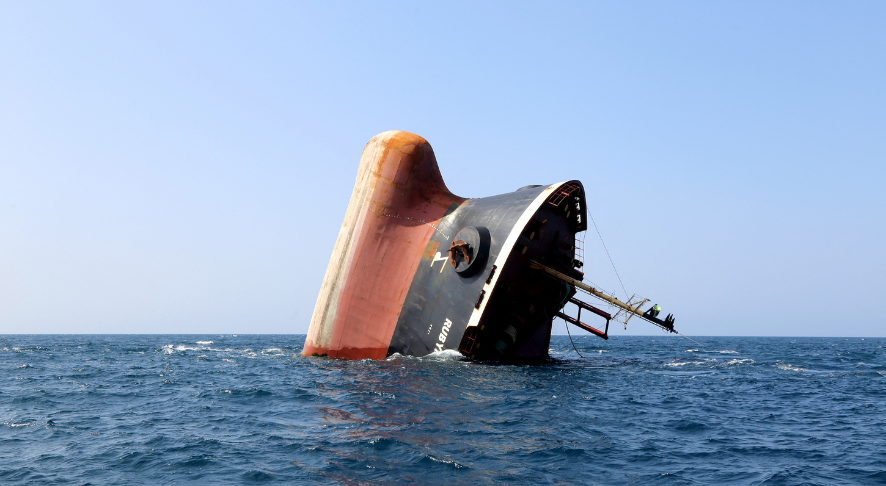Prior to the Hamas-led 7 October 2023 attacks against Israel, Ansarullah (‘Partisans of God’, known best as the Houthis), a predominantly Zaydi Shia armed group with roots in northern Yemen, had been viewed by most international observers as primarily a local threat, despite belonging to Iran’s ‘Axis of Resistance’. This changed in October 2023, when the Houthis launched a first wave of missiles and uninhabited aerial vehicles (UAVs) against targets in Israel, ostensibly in solidarity with the Palestinians in Gaza. Seeing that most of the attacks failed to cause significant damage, the Houthis in November 2023 moved to attack merchant ships affiliated with Israel and its Western allies in the Red Sea and the Indian Ocean, delivering a propaganda victory for the group and sending shock waves through the shipping industry. Subsequent attacks have targeted more than 300 ships, using a wide range of weapons systems. Though most attacks missed or did little damage, the Houthis have sunk two ships and four sailors have lost their lives.
This report analyses the evolution of Houthi strategy at sea over the twelve months since the start of the campaign, particularly with regard to targeting criteria, geographic scope and weapons systems used. It also considers the international military response, which includes several multinational naval missions, as well as the actions by Israel, the United Kingdom and the United States against ground targets in Yemen. It demonstrates that these strikes, while temporarily degrading the capabilities of the Houthis, have not succeeded in significantly reducing the overall number of attacks on ships. Meanwhile, the Houthi arsenal continues to develop and expand. Consisting primarily of Iranian-designed ballistic and cruise missiles, as well as UAVs and uninhabited surface vessels, the group continues to improve the range of its weapons systems and the accuracy of its targeting. Analysing how the Houthis, who have been subject to a United Nations Security Council arms embargo since 2015, manage to smuggle weapons and their components to Yemen, the report illustrates the crucial role played by maritime smuggling using traditional dhows, and in particular the importance of the Red Sea ports of Hudaydah and Salif, which have remained under the control of the Houthis. It also discusses gaps in the enforcement of the sanctions regime and the important role of Yemen’s neighbours in this regard.
In terms of the economic impact of the crisis, the impact on global supply lines has been more limited than was first anticipated. The number of transits per week of merchant ships through the Red Sea as of early November 2024 has decreased by roughly half since November 2023. Many of the larger Western shipping lines have decided to divert their vessels around the Cape of Good Hope, thus increasing the duration and cost of journeys from the Far East to Europe, but saving on insurance premiums and avoiding Suez Canal transit fees. Overall, this has had only a marginal impact on global supply lines and inflationary pressure. The impact on the littoral countries of the Red Sea, however, has been more significant. Egypt, which relies heavily on the revenue from Suez transits, has felt the effects of the crisis particularly acutely, while ports in Israel, Jordan, Saudi Arabia and Sudan have also been affected. Nevertheless, most of the littoral states have remained passive with regard to the crisis, a reflection of the fact that their own ships have not been attacked and that the Houthis’ solidarity with the Palestinians is popular with the populations of many states in the region.
After twelve months of sustained attacks on Western shipping, it seems obvious that the current response by the international community has failed to reach its stated goals. Despite their military superiority, the US and its allies have not seriously degraded the capability of the Houthis to launch attacks, nor their ability to resupply their arsenals. Meanwhile, the presence of the international naval missions has not reassured most major Western shipping lines sufficiently for them to return to the Red Sea. Within Yemen and the region, the ‘success’ of the attacks has significantly raised the profile of the Houthis. Interestingly, while Western governments are engaged in limited military actions against them, there appears to be no complementary political strategy. Rather than trying to contain their military ambitions, the international community remains focused on the humanitarian situation in Yemen and on normalising their relationships with the group. In light of the mounting costs of the military deployments, Western capitals therefore need to reassess their strategy vis-à-vis the Houthis.
